At the time this is written, the mathematics and logic of D. G. Leahy are less well known than his philosophical and theological work. Yet it may be the mathematics for which he is remembered longest. For Leahy has discovered a mathematical structure of primordial dimension, a layer of math beneath the bottom layer. A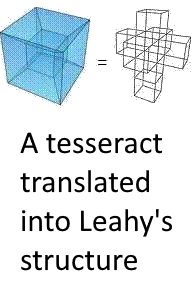 long the way to describing it, D.G. Leahy touches on related structures within logic, DNA, the fine structure constant, and oh so much more. He goes into topology, geometry, perfect Riemannian spheres in an "absolutely ordered imaginary context," tensors, the math of crystals, Fibonacci spirals, and still more. There are new insights into prime numbers, and always, throughout, the "mathematically absolute dominion of an immensely ever-creative God of infinite goodness" who has given us each the "absolute ability" to create at God level -- a level which begins after we realize and overcome the logical flaw at the center of our concept of identity.
long the way to describing it, D.G. Leahy touches on related structures within logic, DNA, the fine structure constant, and oh so much more. He goes into topology, geometry, perfect Riemannian spheres in an "absolutely ordered imaginary context," tensors, the math of crystals, Fibonacci spirals, and still more. There are new insights into prime numbers, and always, throughout, the "mathematically absolute dominion of an immensely ever-creative God of infinite goodness" who has given us each the "absolute ability" to create at God level -- a level which begins after we realize and overcome the logical flaw at the center of our concept of identity.
The logical flaw, once unraveled, shows that there is no such thing as identity as we know it. In short, there is no "I" as we normally think of it. This is why humility is not merely a manner of presenting, but is an essential ingredient in Leahy's writing. Although his writing is dense, abstract, and not like others, it can be understood with patience and diligent study. For example, he says "the thought presently being expressed" instead of "I" and readers tend to get lost because they cannot find a place to attach their identity to what they're reading. (That's my private analysis -- I would say most readers don't even know that they do that).
Readers quickly grow weary of searching through the maze of four-word phrases which replace less precise single-word concepts they're used to. At least, that was the effect his words had on me the first time I tried to read them, when pointed there by a friend years ago. It was over my head, to say the least. But there was an elegance to the language nevertheless which I found compelling.
Failing to read him, I began to read what others had to say about him. Descriptions of Leahy's writing ranged in a very polarized manner: They were either extremely negative or extremely positive -- there was no in between. For example, I took a screenshot of a survey on Amazon, where you can see that his average is 3 stars but... there are no 3-star reviews, nor any four-star reviews. The middle is empty.  It shows that people either love his writing or hate it. Admittedly the sample size is rather small, but as you dig in to the written reviews a little more, you see the same polarization but with more detail. People either love him or they make fun of his writing as famously impenetrable, legendarily dense, and uselessly so.
It shows that people either love his writing or hate it. Admittedly the sample size is rather small, but as you dig in to the written reviews a little more, you see the same polarization but with more detail. People either love him or they make fun of his writing as famously impenetrable, legendarily dense, and uselessly so.
Puzzling contradictions like this have always drawn my attention, but to be honest, I didn't spend much time there. I still had a long ways to go in understanding mathematics, from where I started, an ill-mathematically-educated, superstitious, magical-thinking Dunning Kruger Effect-type redneck from somewhere in the middle of America where all the corn grows. But I did keep studying mathematics, and eventually learned enough to begin to understand a little of what Leahy was saying.
A few years ago I checked in, read some more of his writing, and gave up again, but still intrigued, telling myself I would come back again and study more when I knew more. And then, finally, within the past year, now with a decade of mathematical study, I did this again in the middle of a three-month-long-volley of mathematical insights which left me realizing that there was a profound and crucial truth buried in Leahy's writing, worth spending the time to get to learn what he is saying.
For those who are new to Leahy, here is an introduction to his writing on spheres. The better part is near the middle of the quote, so you can skim through the first part, where he is only setting up the beautiful center of this passage:
Insofar as the truth of THE PLACE identical with creation is the measure of an infinite order of squares (as constructed above), or cubes (in the third dimension), each one of which, in the absolute exteriority of the within now actually existing for the first time, here in the form of the foundational segments of the exploded central square (cube) of any square (cube), measures the diameter of a circle (sphere), there exists for the first time in thought, not 'a single sphere which expands in size without limit', but an infinite number of infinitely transparent absolute actualities: the sphere of absolute objectivity now existing: the sphere of spheres infinitely newly beginning, the sphere of infinitely new, infinitely separate spheres: the sphere the surface of which is the beginning of an absolutely transparent depth. This is the inception of the infinite proportionality of the body. This is the limit of the infinite expansion of the 'single sphere'. This is the beginning of the circumference of the infinite circle. This is the line for the first time. This is the time of beginning. This is creation displacing the abyss itself: the body of the Living God in the form of the beginning, depth absolutely surface, the infinite identical with the finite: the absolute incompatibility of the infinitely numbered points of the circumference of the circle: the absolutely transparent circle. The points of the infinite circle are squares between squares: the point, the square, is the side identical with the diagonal. The logical foundation of the last is most simply and directly evident in the structure of the cornerstone: where the extreme 1 of any side, 10o or o01 or 1o0 or 0o1, never appears as the middle, but is both the extremes and the middle of the 111 diagonal, which has significance if this 111 diagonal can be identified with the sides, which in fact it can be, since the alternate 01o diagonal which unites the alternate extremes of the sides, so that 0 and o are only in this diagonal at once extremes of one middle (the diagonal 1), has the discrete arithmetic value of any side, 10o or o01 or 1o0 or 0o1, as 1 + 0 + o = 2, while sharing with the 111 diagonal (arithmetically 1 + 1 + 1 = 3) the identical logical value, 01o = 1 and 111 = 1. The logical identification of 2 and 3, 'appearance' and 'essence', is the logical identification of side and diagonal, itself at once the finite identified with the infinite.
(From D.G. Leahy, Foundation: Matter the Body Itself. Emphasis added.)
Spiraling toward Leahy
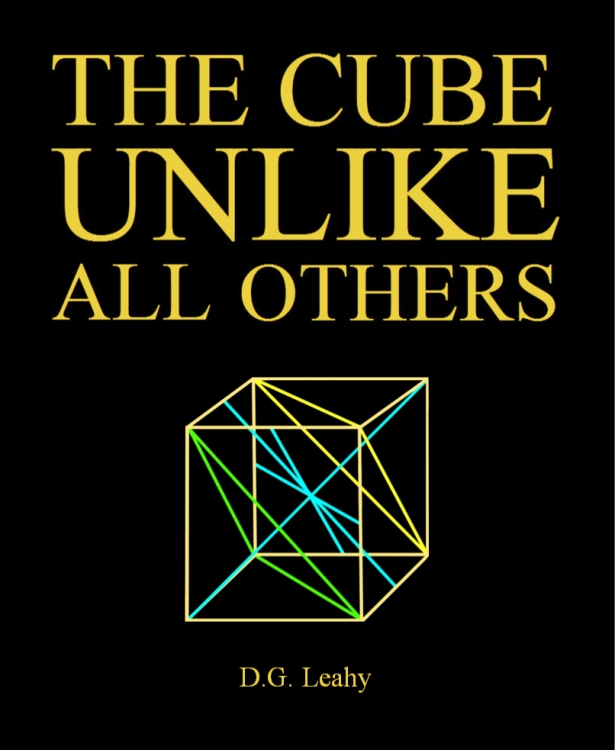 As I described above, I found D. G. Leahy several times before I truly discovered him. Thus I expect others will do the same, but as I arrive on the scene in late 2019, realizing by a long, leisurely, but increasingly intense, spiral of an intellectual journey leading right into the core of Leahy's insights, my best summary is astonishment at how little Leahy is known for his mathematics.
As I described above, I found D. G. Leahy several times before I truly discovered him. Thus I expect others will do the same, but as I arrive on the scene in late 2019, realizing by a long, leisurely, but increasingly intense, spiral of an intellectual journey leading right into the core of Leahy's insights, my best summary is astonishment at how little Leahy is known for his mathematics.
When I first encountered him, a little research turned up that he was the author of a paper on skin, yes, epidermis. It was a very technical article, went immediately over my head, but I categorized Leahy as similar to one of my other crackpot-but-may-be-right friends who was expert in some technically very obscure area in addition to his unique philosophical, historical, and spiritual narratives explored in a web of documents online. Little did I know that his research on skin is directly related to his mathematical insights, and he was studying the microstructure of the skin because he understood the profoundly unique role our skin plays in separating us from the rest of the 3-dimensional world. The paper is still over my head, but at least now I see a glimpse of where he's headed.
That spiral of an intellectual journey which I mentioned is important, because I believe the spiral image metaphorically contains an introductory path to the elements required to understand the depth in Leahy's profoundly deep achievement. You cannot comprehend this kind of depth suddenly, like a zero-sum game being won. Instead, there is a spiral that happens, over time, culminating in a realization that goes deep and broad simultaneously, not one or the other. If you didn't catch it from the quote above, Leahy is identifying the core mathematical structures which underly all of reality, perception, and that realization which brings us to the very edge of creation itself -- not the noun, but the verb -- where creation is happening now in all dimensions.
To summarize him is not easy, nor yet possible to me; a comparison with summarizing quantum mechanics comes to mind -- there's a lot of moving parts involved in even the simplest descriptions. Leahy's writing is so dense because he is unusually precise, like a computer programmer, with lots of discrete details being enumerated with great precision, but he writes with an underlying unity like our subconscious speaks -- intermingling concepts which are superficially distant, but united somehow within, as he reaches deep into numerous fields of study within a single paragraph, with philosophy being the most easily-accessible to me of his writing so far. Philosophy is what he is probably known best for, with very little mention of his writing within mathematics. I believe that will change over time, as his ideas become more accessible.
Brief note for those more interested in Leahy than in my own entanglement with his ideas
This article was written fairly stream-of-consciousness, and I spend the next few sections going into ideas that are only tangentially related to Leahy. An editor version of me in the future has come back to say: If you're here for his ideas, skip ahead to the last section ("By virtue of this spiraling path I had cracked the Leahy code") and hopefully the conclusion is helpful in whetting your appetite for Leahy. For those who have the time and patience with my own rambling, here's my wild segue:
From bipolar to tripolar, a path to unity is forged
 The most direct way in may be a simpler, but still complex, echo of the one upon which I stumbled over many years. The path which led me to Leahy perhaps begins in the late 1990s when I first began studying something that I called "trinary logic," modeling the word "trinary" on "binary." That's where I began.
The most direct way in may be a simpler, but still complex, echo of the one upon which I stumbled over many years. The path which led me to Leahy perhaps begins in the late 1990s when I first began studying something that I called "trinary logic," modeling the word "trinary" on "binary." That's where I began.
At the time, there was not much on this subject available on the Internet, but there was at least one utterly fascinating dive into the beautiful structure of the Aymara language, which the author argued is the only language on earth that carries a trinary logic structure (this particular point is debated, but the site presented it as if it were true.) For me it was a memorable entry into the peculiar relationship between three and infinity and logic and language.
It was a couple years before I discovered that the closest analog to my idiosyncratic ideas on trinary logic (within the world of actual logic) was something called ternary logic. I soon discovered Donald Knuth's famous insight into "balanced ternary" as "the most beautiful number system," which propelled me further. So I began studying trinary logic more, informally, casually, but diligently -- contemplating and thinking about it in spare moments. It was a few more years before I found the logical flaws within trinary logic itself, deconstructed it, realized that its flaws were based on a binary understanding of trinary, and slowly began rebuilding it with an awareness that there were serious problems with how we think of unity, zero, halving, and division itself.
I developed a deep interest in the relationship between three, zero, and what I would eventually realize was infinity. Tesla's famous insight regarding the mystery hidden within "3, 6, and 9" led me, over a lot of time and more meditation, to understand that, of all the YouTube videos on the subject none of them capture what Tesla was talking about. No one was even close to deciphering it in a way that correlated with my own studies, which I believed -- being founded on an obsession with the number three -- were important, and I should at least find traces of it in the "true" interpretation.
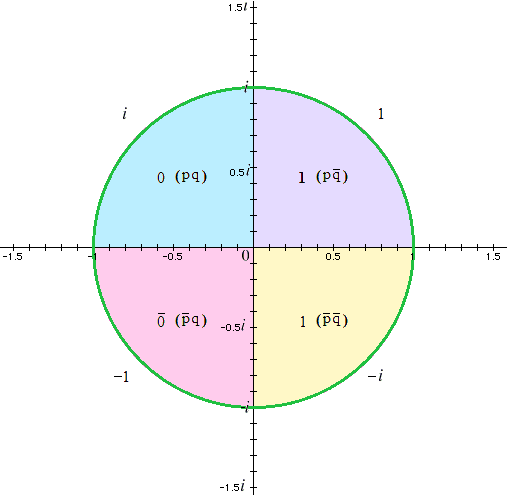 Over time, I developed an emotional, living, breathing, practical intimacy with trinary logic when I realized that doctors who were treating symptoms of a bipolar disorder did so in a manner which was itself bipolar. I gradually developed the realization that "bipolar people are not bipolar, instead, the whole culture is bipolar, and bipolar people reveal this flaw with their approach to life."
Over time, I developed an emotional, living, breathing, practical intimacy with trinary logic when I realized that doctors who were treating symptoms of a bipolar disorder did so in a manner which was itself bipolar. I gradually developed the realization that "bipolar people are not bipolar, instead, the whole culture is bipolar, and bipolar people reveal this flaw with their approach to life."
Abandoning the bipolar model incrementally -- because large transitions strengthened it -- I eventually began identifying myself as "tripolar, with an underdeveloped third pole" and slowly began charting a course out of a period of extremely polarized symptoms, walking on a dry land of psychological hope I was creating between the two edges of the Red Sea of madness.
I began to be comfortable with "walking in the margins," where lost power is regained in tiny increments hidden in the margins of life, not by large, heroic, moves through the middle. I began writing notes to myself from the manic state to myself in the depressed state, and the other way back again, and slowly began building a link across the corpus callosum of my mind, creating a central core of reliable communication between over-divided hemispheres, which arrived slowly at first, but incrementally, gradually, grew to a point of stability within my consciousness. This became a place I protected, a place where I could go and find peace, a place to meditate. For years, I spent a lot of time in forests, learning by proximity to the curliqued physics of Nature herself -- which are quite different from the too-orthogonal physics of Euclidean space buried in all languages in Western Civilization and therefore nearly impossible to see objectively.
As time passed, I was beginning to understand that Aristotlean logic, based on the Law of Excluded Middle as it is, was fundamentally flawed, and came up with a working theory that Aristotle had invented one of the most destructive forces in history. Now, years later, I am beginning to understand the wisdom of his role, a necessary one when you understand how Greek thought prepared the way for Christ to reveal the essential trinity embedded within heavenly logic. Christ spoke within a culture which was still absorbing the advent of categorical, binary logic, a logic which was designed from its inception to eventually collapse and reveal within it a truth which would not be seen for centuries.
At the time, though, I only understood that binary logic was broken somehow, and out of this brokenness came a broken legal system leading inevitably to war and conflict, an endless zero-sum game between everyone and everyone else, culminating in the very modern threat of the current winner of the zero-sum game, who has the ability to press a single button and destroy all life on earth. We had to return our culture to its pre-logical ternary logic roots, I could see, but knew I didn't know enough to begin piecing it all together. I continued seeking.
The scapegoat mechanism reveals how merciless zero-sum logic gets
About then I discovered, and slowly re-invented, a parallel version of Rene Girard's ideas on the scapegoat mechanism. The re-invention came because, after the initial discovery, it was several years before I had a chance to actually read Girard's writings. So for years I operated on a bare skeleton key of his insights, based upon a brief mention in an overheard conversation of how the scapegoat mechanism worked. This small seed though, offered me a way to understand the misery of my fragmented condition at the time.
As I planted the seed of his insight, it grew into an oak tree, eventually carrying me through some of the worst of my transition stages from bipolar madness into tripolar equalibrium. The equalibrium has, thankfully, been the core of my nature for about a dozen years now. I no longer experience the grand ups and downs that I used to, and haven't for years. My ups and downs are within the range of normal, and do not dominate my life, but usually provide insight into the larger themes playing through life.
This was a comfort to me: "It is okay to suffer personally as a consequence of circumstances that are out of my control, because (like it or not) I am playing the role of scapegoat and thus others benefit even though I am suffering." It gave me a sense of meaning in the sometimes-meaningless narrative of my life. I could also see that the role need not be permanent, and there hope was born -- I didn't have to always be this way.
This was how I developed my own idiosyncratic understanding of Girard's scapegoat mechanism, lacking of course all his incredible intellectual foundation. It worked. It gave me a context within which to interpret what was previously uninterpretable chaos. For the sake of my own sanity, I determined that I was playing the role of scapegoat for some intense, very complex drama within my birth family in a seething pot of "post-modern fundamentalist Christian theology," as a friend described it once. With this lever, I began charting my course out toward normalcy with deeper and deeper insights into the polarized nature of "the hero" and "the scapegoat," the greatest and the least of any domain, and their eternal struggle to maintain control over the middle point between them, where the normal person lives.
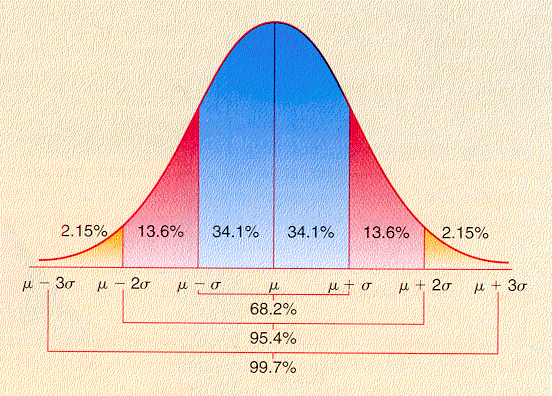 The center of the Bell Curve is heavily populated with normal people who don't explore the edges where people like I lived. I learned to stop seeking exceptionalism, to be comfortable with being ordinary, instead of trying so hard to escape it. I realized the majesty of the middle, which I now believe is the correct place of Jesus Christ, who appeared neither as a glowing 30-foot-tall winged giant who commanded obedience ("the hero"), nor as a lesser creature which adored us and always suffered ("the scapegoat"), but as a man, ordinary, in the middle, revealing the center by being both extremes simultaneously -- as much like normal as the Creator can be while in mortality, and yet also entirely and absolutely divine in every possible sense of the word.
The center of the Bell Curve is heavily populated with normal people who don't explore the edges where people like I lived. I learned to stop seeking exceptionalism, to be comfortable with being ordinary, instead of trying so hard to escape it. I realized the majesty of the middle, which I now believe is the correct place of Jesus Christ, who appeared neither as a glowing 30-foot-tall winged giant who commanded obedience ("the hero"), nor as a lesser creature which adored us and always suffered ("the scapegoat"), but as a man, ordinary, in the middle, revealing the center by being both extremes simultaneously -- as much like normal as the Creator can be while in mortality, and yet also entirely and absolutely divine in every possible sense of the word.
I developed a keen understanding of the region which to everyone else did not exist. I was studying what exists within the area specifically excluded by the Law of Excluded Middle. When I finally was able to properly read Rene Girard, it was years later, after acquiring a job, rent, family, the basic elements of stability. As these came into my life, enough that I could start reading philosophy again, I sought Girard and quickly adjusted my inner ideas on the scapegoat mechanism -- and its related mathematical structures -- to what he actually wrote, which was far more psychological, less rigidly structured, more mythological than I realized. Not so mathematical, and I wasn't able to find much mention of the "hero" role which I had developed in my version, but did find it in Joseph Campbell's works, of course. Perhaps the two authors saw two sides of the same coin? Worth exploring some time.
The vastness of Girard's theory is what struck me most, perhaps. He introduced me to a whole new world, the largest vista I have ever encountered within contemporary thought, and I became comfortable with seeing hidden in his structure the glimpses of extremely penetrating insights that will take centuries to properly unfurl. Having proved the functional value of his theory in my own life journey, I was not skeptical, but inquisitive, and seeing patterns which others who haven't had that journey might not see.
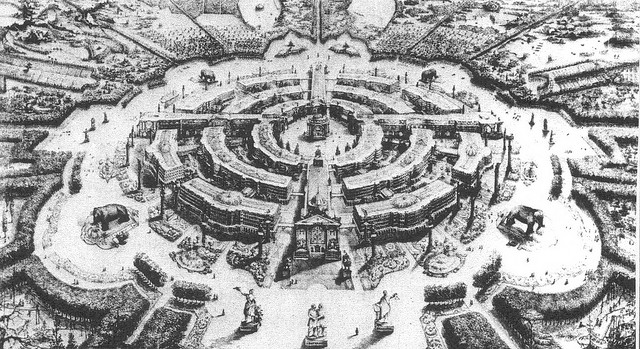 Trying to understand how a response to the scapegoat mechanism would translate into the nature of a people who live in a Zionic utopia, I studied social organization theory (a lot) for clues on how to implement Girard's ideas within a culture, feeling certain that Girard had discovered the biggest insight into the nature of Christ, and therefore heaven-on-earth, since the time of Christ, and all we needed to do now was implement them on a societal level.
Trying to understand how a response to the scapegoat mechanism would translate into the nature of a people who live in a Zionic utopia, I studied social organization theory (a lot) for clues on how to implement Girard's ideas within a culture, feeling certain that Girard had discovered the biggest insight into the nature of Christ, and therefore heaven-on-earth, since the time of Christ, and all we needed to do now was implement them on a societal level.
Then, I stumbled upon a brief passage in Girard, where he casually mentions how implementation for the entire vast system of new language, of new thought, begins in a very simple way: Once the scapegoat mechanism is properly described to a group of people, it stops working. This is because it's a subconcious force, operating silently in groups, which resolves itself as soon as the light of ordinary consciousness shines upon it. I'll say it again: People automatically stop scapegoating as soon as they realize what they're doing. The utter simplicity of the solution, the realization that all war would end and world peace would begin if everyone became aware of a simple thing, came like a bolt of lightning. (Hmm, that simile carries the strength but too much suddenness. It was more like finding a pearl of great price hidden in a field, causing me to begin preparing to purchase the field around the discovery, in order to preserve and protect this gem.)
How to eliminate the ego yet still communicate in a fairly normal manner?
With powerful insights like that, Girard was the state-of-the-art for my journey for years. I was imagining developing the mathematical and logical language to communicate his ideas, along with all the not-entirely-clear mathematical insights on ternary logic, when, not long ago, I found Korzybski. Again, I had encountered his material from time to time before, but recently I finally had time to dig in a little more. Because I was already seeking a structure which eliminates ego by making a few simple changes to group dynamics, I was able to rapidly see the amazing power and simplicity of the difference between everyday semantics and Korzybski's General Semantics: the word "is."
I soon discovered Korzybski's insight into the Identity flaw was another way of saying what I had seen years before but had not been able to apply it to language so concisely and powerfully as he did. It turns out, the word "I" and the verb "to be" are all that need to be adjusted in language, and the whole body would be more coherent, less divisive! As I researched, I found a small group of people who were working on a form of set theory that arises from General Semantics, but as far as I can tell, there are no other mentions. Their work is not yet as accessible as Korzybski's writing itself. But it has some important insights which a proper realization will carry... Meanwhile, on the main General Semantics website, there is a list of all the ways GS interacts with all other fields of study, but there is an entry missing, among the dozens: mathematics. The link between mathematics and General Semantics is non-existent! What???

I immediately began wondering how it would look, knowing already that triadic structures (of C. S. Peirce) would play a role, as well as the ternary logic of Lukasiewicz... I did not look long. I soon found D. G. Leahy and an incredible fountain of insights began pouring in because I had found the motherlode. Because of Girard's structure which is, at essence, very simple and operates everywhere, and Korzybski's insight into language and its ego-identity flaw, and my own desire to unravel the true meaning of three, zero, infinity, halving, division, and unity, I was uniquely prepared to see Leahy as close as a beginner can get on his own terms, and realize with wonder that he already did all the math required. He appears to have found the root of the root of the root, of both logic and mathematics... and physics.
By virtue of this spiraling path I had cracked the Leahy code
What was impenetrable to me previously began to make sense: I already had an infrastructure, a language, and a lot of internal puzzling over the same paradoxes with multiple forms of zero, the riddles of water, helixes, the "nothing that is not nothing," that Leahy resolved, enough to recognize what he created is spot on, and so far ahead of me that I am in awe at what I see yet undiscovered by others within his writing, similar to what I see in Girard's writing. In one example, I was trying to do with a sequence including 1, 2, 1/2, and 3, what he did more simply by implementing two zeros -- way ahead of me, but I see it immediately.
Others see related glimpses, like Bill Shilito's wonderful site on zero and one, but Leahy appears to have it all. It is all I can do, at this point, to simply be an evangelist for his mathematical approach, which I see as an essentially humble elimination of ego and the consequent advent of a new foundation for mathematics and logic. His math dovetails with Korzybski's semantics, and it all falls into place when you see it.
But who am I? I am obscure, way off in some backwater of the Internet which index-everything search engine crawlers and philosophy undergrads who still actually care about obscure things know, but about whom nobody else knows or cares. I think that will change in time, because of how incredibly profound Leahy's work is. What happens next is mostly inevitable: all I can do is help it a little. If Cantor discovered "a paradise in mathematics," Leahy has discovered "that eternal fountain of molten diamonds out of which paradises are created," in the center of the infinite now of the thinking which creates everything always. Everywhere. Exquisitely.
The moment of realization, dawning for a few days, crystallized when I saw Leahy discussing his ideas, in an interview with Todd Carter that happened a few years ago, not long before he died. He spoke in a normal, rational manner, and I realized suddenly that it was possible for ordinary people to understand things like the thought presently occurring, and it simply remained for people like me to help build paths in his direction. A much easier challenge than to do what he has done.
So here it is. This essay is the first draft of a rough "Eureka," itself too dense and covering too many topics to be useful to anyone, and I haven't yet got to the part where I talk properly about the role of humility in mathematics, toward which I began aiming as I started writing this post. But I have at least put to rest my poor mathematical mind's worry that I may accidentally die without having publically pointed people toward Leahy. This is enough to get started, for those who can untangle these words. Hopefully, though, I stay alive, and unravel these things in a systematic, methodical manner which is accessible to others.
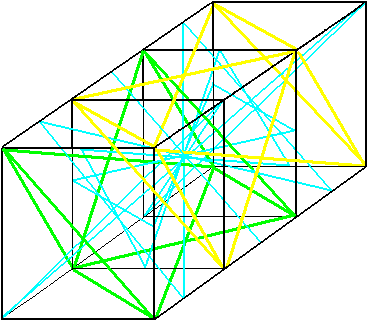
1 From Iain -
Amazing to see someone else tackling Leahy, especially mathematically. Are you aware of an online seminar organized by some of Leahy’s former students? Contact lissa [dot] mccullough at gmail.com to get on a mailing list.
2 From Clearhat -
Iain,
Yes, I am familiar with the seminar. Others stumbling upon this page may find the email address you posted helpful.
I've actually attended fairly regularly for a few years, and thus I've seen you presenting there. But I keep pretty quiet til I know more, so you would not have seen me.
Lissa has the best understanding of him, in my opinion. Really majestic thoughts that remind me of Leahy's writings more than other speakers. I admire her patience working with others who see him through their different lenses, but honestly everyone has great insights. I've even done a lil deep dive on Mr. Stein's work because he's such a fascinating fellow. His chapter in the book really helped me frame things in my world, in spite of his own skepticism. :-)
And now I see your site, and a quick search shows you explore Leahy's writings there in at least these posts:
https://iainatkinson.uk/2023/01/27/dream-1/
https://iainatkinson.uk/2023/02/27/blog-4/
https://iainatkinson.uk/2024/02/29/blog-8/
https://iainatkinson.uk/2023/05/11/ekphrasis-3/
https://iainatkinson.uk/2024/11/20/ekphrasis-4/
So I look forward to finding the time to read what you're writing. Also, I've lightly edited the preceding article to make it easier for someone looking for info about Leahy to find his ideas instead of my own ego entanglement.
Best regards